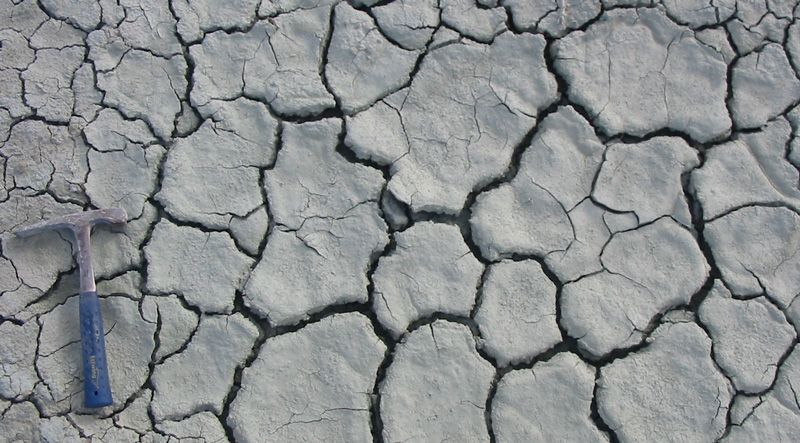My home country Estonia has been geologically quiet place for a loooooong time.
I usually think its a bad thing. No volcanoes, no mountains, little mineralogical and lithological versatility, no real structures — everything is more or less parallel and layered. The sedimentary layers that cover the crystalline basement have never been buried very deep. Maximum perhaps 1 km or so. Therefore, these sedimentary rocks are only weakly altered by diagenetic processes. Because of that we have something rather remarkable. We have a layer (up to 70 meters in thickness) of bluish gray clay in the bedrock that is half a billion years old (from the Cambrian). I really mean clay, not claystone. This clay is still quite soft and becomes muddy when wet.
Here is a photo of this clay with mud cracks. The mud cracks are fresh but the clay itself is really old. The photo is taken in a clay quarry. The clay is used to make cement.

Recent mud cracks in Cambrian clay.

The same clay before getting wet. The width of the sample from Kunda is 11 cm.
This material I useful for road construction or not?